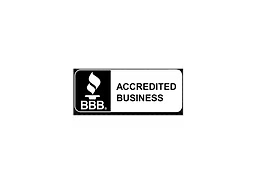Faucet Repair & Replacement
Jolly Plumbing & Heating, Inc. Handles Repairs and Installations When it comes to plumbing in the Colorado Springs area, we have seen it all. Our plumbers can be at your home in no time
Faucet Services
A leaking or damaged faucet may seem like a minor issue on the surface, but it can become a big issue quicker than you may think. The extra water from a leaky faucet alone could translate to a spike in your utility bill. If you just moved in to your home and want to upgrade the faucets or if you have lived in your home for years and are just tired of the steady drip of water, our experienced team can help repair or replace your old faucets.
Types of Faucet Repairs
In order to understand what might go wrong with your toilet, it’s important to know how it functions. Here is a quick step by step of how your toilet works:

Sink Faucets
Your kitchen sink is used every single day, and even if you are not an avid home cook you are most likely still using your sink for various food prep activities and washing dishes. The kitchen faucet is a little different from other faucets around the house simply because there are extra components like a spray nozzle and garbage disposal. When any one of these three components starts acting up or goes out completely it can lead to inconvenient and sometimes dangerous situations. Luckily our skilled team at Jolly Plumbing has the knowledge and the tools to repair or replace all the major components in your kitchen sink, including the garbage disposal.

Tub Faucets
A hot shower is the best part of most people’s morning routine, but when the integrity of your bathtub faucet is compromised it can lead to a loss of water pressure and potentially cause leaks elsewhere in your home. There are several major types of bathroom and bathtub faucets including the cartridge, ball, disk, and compression. One or all of these different types of faucets are probably being used in your home. Before trying to fix a leak on your own, it can be beneficial to consult a plumber who is well versed in the different styles of faucets and can advise you on what the best course of action would be.

Sink Faucets
Outdoor faucets are really only used during the spring and summer months when there is an increased need for water in the garden, on the lawn, and even in the flower beds. What this means is that for a portion of the year outdoor faucets will sit completely neglected and be susceptible to leaks. When cold weather is present it can cause what little water is left in the faucet to freeze and expand. Most outdoor faucets are designed for cold weather and can withstand the fluctuation, but sometimes an old faucet will develop a leak or in some cases even burst. In the spring of every year, it’s always a good idea to let a reputable plumber do an inspection of your outdoor faucets.
Common Faucet Repair and Replacement FAQS
Outdoor Faucet Repairs
Leaks of any kind in your home plumbing can spell trouble for the water pressure, as well as your utility bills. One area you may not think about all that often is the outdoor faucet that you attach your hose during the warmer months of the year. These outdoor faucets can easily become corroded, and the rubber pieces inside them brittle if they are not properly taken care of. Luckily, repairs are easy and can usually be done by you. If anything more serious arises that would require an outdoor faucet replacement, our experienced Colorado Springs team is only a phone call away.
What Causes Outdoor Faucet Problems?
Outdoor faucets are exposed to the elements year-round, and during the summer months, they are used relentlessly to run sprinklers, water plants, and to fill swimming pools. All of this wear and tear, especially while being outside during freezing winter temperatures, will inevitably create leaks or cracks over time.
Outdoor Faucet Repair
If your faucet is simply dripping when you turn it on, there is actually a very simple process you can use to repair and tighten the spigot. If the issue becomes larger, or you are uncomfortable doing the repair on your own you can always schedule our team for a repair call. In order to fix an outside water faucet.
Turn off the inline valve that controls the water line coming into the faucet, or simply shut off the main water supply for the house.
Unscrew the nut under the handle of the faucet. Since the hardware can become corroded over time, you will likely need to use a lubricant and a pair of pliers.
Once the nut is off, you can pull the valve out of the faucet housing. Using a Philips head screwdriver to pry off the washers and replace them as needed.
Outdoor Faucet Replacement
What do you do if you need to replace your outdoor faucet? If despite your best efforts, or the best efforts of your plumber to repair the leaking faucet, it may be time to install an outside faucet replacement. The metal on an outdoor faucet can become rusted, corroded, or even crack after years of use, making it impossible to repair by simply replacing the washers. On average, to replace an outdoor faucet will cost anywhere from $100 – $300, and once the new faucet is in hand, the installation process is fairly quick. Outdoor faucet replacement can be complicated if you lack the right tools or knowledge to complete the job, especially if the leak becomes a deeper problem that affects the indoor plumbing as well. For helpful service and a knowledgeable team, contact Jolly Plumbing!



